Imagine being nine years old again.
Your room is filled with plastic toy soldiers, cowboys, and tiny figurines that never move beyond the adventures you invent in your head. Now picture one of those toys suddenly blinking, breathing, and talking back to you.
That’s the wonder The Indian in the Cupboard gave us in 1995, a movie that quietly slipped into theaters but left a lasting mark on kids who grew up in the ’90s.
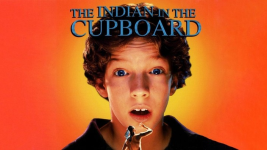
Photo credit: Rotten Tomato
Directed by Frank Oz (yes, the man behind Yoda’s voice) and based on Lynne Reid Banks’ beloved 1980 children’s book, the film told the story of Omri, a New York boy who discovers that an old cupboard has the power to bring toys to life. With a twist of a key, plastic became flesh, and imagination became reality. It was thrilling, strange, and deeply moving.
For me, it wasn’t just a movie. It was a reflection of childhood curiosity, the kind of belief that maybe, just maybe, the toys on our shelves were waiting for the right kind of magic.
Sure, critics were divided and the box office wasn’t kind, but kids didn’t care.
We were too busy staring wide-eyed at Little Bear, Boone, and the cupboard that made us all wonder what could happen if our favorite action figure came alive.
Let's go back into the magic of The Indian in the Cupboard. We’ll explore how it came to be, its unforgettable characters, and why it remains one of the most unique family films of the 1990s.
It started in 1980 when British author Lynne Reid Banks published a children’s novel about a boy who discovers his toys can come to life. The book became a hit, sparking sequels and eventually catching the eye of filmmakers in the United States.
By the mid-1990s, it was ripe for adaptation.
The movie was directed by Frank Oz, a name that might ring a bell for anyone who loved The Muppets or Star Wars. Oz was already a legend in puppetry and voice acting (yes, Yoda was his voice), so having him bring a story about toys coming alive felt almost perfect. The screenplay was handled by Melissa Mathison, best known for writing E.T. the Extra-Terrestrial. With that team in place, expectations were high.
The film hit theaters on July 14, 1995, backed by heavyweights like Paramount Pictures and Columbia Pictures.
It had a solid budget of $45 million, which was no small sum at the time. But here’s the kicker—it only earned about $35.7 million at the box office.
By Hollywood standards, that was a flop. Critics were mixed too, with some praising its gentle storytelling while others called it slow compared to flashier family films of the decade.
And yet, something magical happened after its theatrical run.
The movie found a second life on VHS and DVD, reaching kids at home who weren’t old enough to see it in theaters or who missed it the first time around. For many of us, that’s where the cupboard first swung open and the toys sprang to life.
Over time, it built a quiet but loyal cult following, making it one of those “you had to be there” movies of the ’90s.
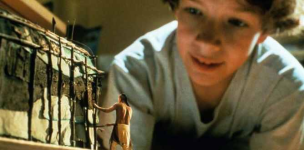
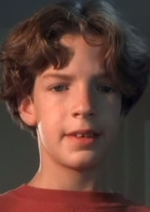
Omri is a curious nine-year-old who receives a cupboard and a small toy Native American figure for his birthday. At first glance, Omri feels like any ordinary kid from the ’90s; awkward, imaginative, and still figuring out how the world works.
But when he discovers the cupboard can bring toys to life, he suddenly finds himself holding a secret bigger than anything he could have imagined.
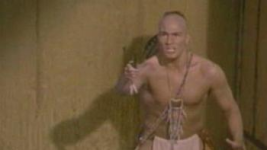
Played by Litefoot in his acting debut, Little Bear is no simple toy. He carries the weight of his culture, his past, and his grief as a widower. His presence transforms the film from a whimsical children’s tale into something deeper; something about empathy, respect, and the responsibility of playing god with another being’s life.
His relationship with Omri is what makes the movie linger in our memories.
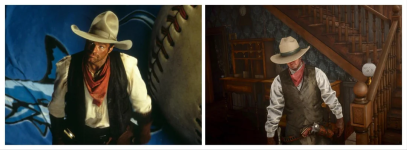
Played by David Keith, Boone is a character that starts off as comic relief but becomes something more. His clashes with Little Bear remind us of the historical tensions between Native Americans and cowboys, but also show how unlikely friendships can grow once walls of prejudice begin to crumble.

He isn’t satisfied with just watching, he wants in. Patrick’s impatience and excitement complicate things for Omri, but that’s part of what makes the story feel so true to childhood friendships.
Who among us wouldn’t want to try bringing our own favorite toy to life if we had the chance?
Photo Credit: Getty Images
The supporting cast, including Omri’s parents (played by Lindsay Crouse and Richard Jenkins), fill in the backdrop of everyday life. They never truly understand the magical secret in their home, but their presence grounds Omri’s adventure, reminding us that childhood magic often happens in the cracks of ordinary family life.
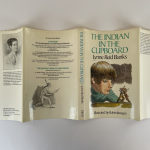
Banks went on to write several sequels, including The Return of the Indian, The Secret of the Indian, and The Mystery of the Cupboard. Each book built on the magical cupboard concept, taking Omri and Little Bear into new adventures.
While the film only adapted the first book, fans of the movie often found themselves diving into the sequels to keep the magic alive.
Just the same year, Pixar’s Toy Story (1995) redefined animation and gave us Buzz and Woody. Later, Small Soldiers (1998) explored the idea of action figures with advanced AI running amok. Compared to these, The Indian in the Cupboard was quieter and more heartfelt. It didn’t rely on big laughs or action-packed sequences.
Instead, it gave us a thoughtful story about friendship, responsibility, and seeing toys as more than just plastic.
hese films shared a common theme: childhood imagination crossing into reality. Jumanji showed us a board game that could change the world around us, while Hook reimagined Peter Pan growing up. In the same spirit, The Indian in the Cupboard captured the wonder of what happens when our playthings refuse to stay in the world of make-believe.
Together, they formed a golden age of family fantasies that still make us nostalgic today.
He was discovered after performing at a concert in Rome. The producers saw something in him that fit the role. It was his acting debut, and he made Little Bear unforgettable.
Instead of using a Mohawk adviser, the filmmakers brought in Onondaga adviser Jeanne Shenandoah. Every tattoo, earlobe, and moccasin was designed to be historically correct. That attention to detail gave the film depth many kids missed but adults now appreciate.
Technician Pat Tanner died in an accident while working on set. His death led to new safety rules for film crews. It’s a sobering footnote to a film remembered for its magic.
Not great for theaters. But when it hit VHS, it became a favorite in living rooms. That’s where its cult following began.
Some praised its gentle lessons, others thought it was too slow. Roger Ebert called it depressing, while kids who watched it on repeat would beg to differ. It’s one of those movies that critics and fans never saw the same way.
It turned daydreams into real consequences. Omri quickly learned that imagination comes with responsibility. Kids watching in the ’90s got a taste of what it means to take care of something fragile and real.
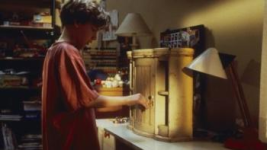
Through Little Bear, the movie gave kids a window into Native American life.
It wasn’t perfect, but it was more thoughtful than most films at the time. Little Bear wasn’t a stereotype, he was a person with grief, pride, and dignity. For many viewers, it was their first lesson in empathy through fantasy.
Omri had the power to control Little Bear and Boone. But the story made clear that power should come with respect. By the end, Omri didn’t see them as toys anymore, but as people with their own lives.
That lesson still feels relevant today.
Most of us stumbled on it later, tucked in a stack of VHS tapes or on a shiny new DVD. That’s where the film really came alive. It became one of those movies you’d watch over and over, usually on a quiet weekend or during school holidays. The kind of film you’d half-know by heart because you kept hitting rewind.
That’s how it carved its space in our memories; not in box office numbers, but in repeat viewings at home.
The 1990s were loaded with family films that felt magical.
Jumanji gave us a jungle that burst into the living room. Hook let us imagine Peter Pan all grown up. Matilda turned every classroom daydreamer into a hero. And of course, Toy Story made us wonder if our toys had lives of their own when the lights went out. The Indian in the Cupboard didn’t get the same spotlight, but it belonged right there with the rest.
It wasn’t flashy or loud. Instead, it had a gentler kind of wonder, the kind that sneaks up on you and stays with you years later.
Even though it bombed at the box office, the movie refused to fade away. It found its people; kids who couldn’t stop thinking about Omri, Little Bear, and that mysterious cupboard.
Today, you can still find fans swapping memories on Reddit threads, rewatching old trailers on YouTube, or writing blog posts about how it shaped their childhood. That’s the beauty of cult classics.
They don’t need the world to love them, just enough hearts to keep the fire glowing. The idea of tiny figures living in a big world has always fascinated storytellers.
After The Indian in the Cupboard, we saw movies like Small Soldiers, where action figures fought real battles, and shows where toys or dolls carried hidden lives.
Even recent animated films owe a nod to this kind of storytelling. What made The Indian in the Cupboard different was the way it tied magic to responsibility. It wasn’t just “what if toys came alive?” but “what if you had to take care of them?”
That subtle twist is part of why it still feels special today.
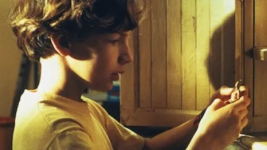
It didn’t top the box office or launch a franchise. But for the kids who discovered it, the film was unforgettable. It gave us a glimpse into a world where imagination had weight and magic carried responsibility.
Rewatching it today, you can still feel that spark.
The story whispers reminders about respect, empathy, and the power of seeing others as more than objects. For kids in the ’90s, that was a quiet but powerful lesson tucked inside a fantasy adventure. For adults revisiting it now, it’s a time capsule of rainy afternoons and worn-out VHS tapes.
The magic of the cupboard wasn’t really in the wood or the key; it was in how it made us feel. Curious. Wide-eyed. Believing, even for a moment, that our toys could come alive. And that’s why the film still matters. It turned ordinary childhood wonder into something we could hold onto, even as we grew up.
A cupboard, a key, and a tiny warrior. That’s all it took to remind us that sometimes the smallest stories leave the biggest mark.
Your room is filled with plastic toy soldiers, cowboys, and tiny figurines that never move beyond the adventures you invent in your head. Now picture one of those toys suddenly blinking, breathing, and talking back to you.
That’s the wonder The Indian in the Cupboard gave us in 1995, a movie that quietly slipped into theaters but left a lasting mark on kids who grew up in the ’90s.

Photo credit: Rotten Tomato
Directed by Frank Oz (yes, the man behind Yoda’s voice) and based on Lynne Reid Banks’ beloved 1980 children’s book, the film told the story of Omri, a New York boy who discovers that an old cupboard has the power to bring toys to life. With a twist of a key, plastic became flesh, and imagination became reality. It was thrilling, strange, and deeply moving.
For me, it wasn’t just a movie. It was a reflection of childhood curiosity, the kind of belief that maybe, just maybe, the toys on our shelves were waiting for the right kind of magic.
Sure, critics were divided and the box office wasn’t kind, but kids didn’t care.
We were too busy staring wide-eyed at Little Bear, Boone, and the cupboard that made us all wonder what could happen if our favorite action figure came alive.
Let's go back into the magic of The Indian in the Cupboard. We’ll explore how it came to be, its unforgettable characters, and why it remains one of the most unique family films of the 1990s.
How a Book Became a ’90s Family Fantasy
The story of The Indian in the Cupboard didn’t begin in Hollywood.It started in 1980 when British author Lynne Reid Banks published a children’s novel about a boy who discovers his toys can come to life. The book became a hit, sparking sequels and eventually catching the eye of filmmakers in the United States.
By the mid-1990s, it was ripe for adaptation.
The movie was directed by Frank Oz, a name that might ring a bell for anyone who loved The Muppets or Star Wars. Oz was already a legend in puppetry and voice acting (yes, Yoda was his voice), so having him bring a story about toys coming alive felt almost perfect. The screenplay was handled by Melissa Mathison, best known for writing E.T. the Extra-Terrestrial. With that team in place, expectations were high.
The film hit theaters on July 14, 1995, backed by heavyweights like Paramount Pictures and Columbia Pictures.
It had a solid budget of $45 million, which was no small sum at the time. But here’s the kicker—it only earned about $35.7 million at the box office.
By Hollywood standards, that was a flop. Critics were mixed too, with some praising its gentle storytelling while others called it slow compared to flashier family films of the decade.
And yet, something magical happened after its theatrical run.
The movie found a second life on VHS and DVD, reaching kids at home who weren’t old enough to see it in theaters or who missed it the first time around. For many of us, that’s where the cupboard first swung open and the toys sprang to life.
Over time, it built a quiet but loyal cult following, making it one of those “you had to be there” movies of the ’90s.

The Indian in the Cupboard Characters
Omri: The Boy Who Found the Key
At the center of the film is Omri, played by Hal Scardino.
Omri is a curious nine-year-old who receives a cupboard and a small toy Native American figure for his birthday. At first glance, Omri feels like any ordinary kid from the ’90s; awkward, imaginative, and still figuring out how the world works.
But when he discovers the cupboard can bring toys to life, he suddenly finds himself holding a secret bigger than anything he could have imagined.
Little Bear: The Warrior with Wisdom
Then comes Little Bear, the Iroquois warrior who becomes the soul of the story.
Played by Litefoot in his acting debut, Little Bear is no simple toy. He carries the weight of his culture, his past, and his grief as a widower. His presence transforms the film from a whimsical children’s tale into something deeper; something about empathy, respect, and the responsibility of playing god with another being’s life.
His relationship with Omri is what makes the movie linger in our memories.
Boone: The Cowboy with a Loud Heart
Boone, the cowboy from 1879 brought to life by Patrick, is loud, brash, and funny in all the ways Little Bear is serious.
Played by David Keith, Boone is a character that starts off as comic relief but becomes something more. His clashes with Little Bear remind us of the historical tensions between Native Americans and cowboys, but also show how unlikely friendships can grow once walls of prejudice begin to crumble.
Patrick: The Friend Who Wanted In
Patrick, Omri’s best friend, is the one who pushes the boundaries of the cupboard’s magic.
He isn’t satisfied with just watching, he wants in. Patrick’s impatience and excitement complicate things for Omri, but that’s part of what makes the story feel so true to childhood friendships.
Who among us wouldn’t want to try bringing our own favorite toy to life if we had the chance?
Photo Credit: Getty Images
The supporting cast, including Omri’s parents (played by Lindsay Crouse and Richard Jenkins), fill in the backdrop of everyday life. They never truly understand the magical secret in their home, but their presence grounds Omri’s adventure, reminding us that childhood magic often happens in the cracks of ordinary family life.
How This Film Stands Beside Other ’90s Fantasies
The Book Series That Expanded the Magic
The film was based on Lynne Reid Banks’ 1980 novel, but the story didn’t stop there.
Banks went on to write several sequels, including The Return of the Indian, The Secret of the Indian, and The Mystery of the Cupboard. Each book built on the magical cupboard concept, taking Omri and Little Bear into new adventures.
While the film only adapted the first book, fans of the movie often found themselves diving into the sequels to keep the magic alive.
Toy-Life Adventures in the Same Era
The Indian in the Cupboard wasn’t the only ’90s story to bring toys to life.Just the same year, Pixar’s Toy Story (1995) redefined animation and gave us Buzz and Woody. Later, Small Soldiers (1998) explored the idea of action figures with advanced AI running amok. Compared to these, The Indian in the Cupboard was quieter and more heartfelt. It didn’t rely on big laughs or action-packed sequences.
Instead, it gave us a thoughtful story about friendship, responsibility, and seeing toys as more than just plastic.
Fantasy Cousins: Jumanji and Hook
If you were a kid in the ’90s, chances are your VHS shelf held Jumanji (1995) or Hook (1991) alongside The Indian in the Cupboard. These films shared a common theme: childhood imagination crossing into reality. Jumanji showed us a board game that could change the world around us, while Hook reimagined Peter Pan growing up. In the same spirit, The Indian in the Cupboard captured the wonder of what happens when our playthings refuse to stay in the world of make-believe.
Together, they formed a golden age of family fantasies that still make us nostalgic today.
5 Behind-the-Scenes Stories You Probably Didn’t Know
1. Litefoot’s Journey from Rap to Hollywood
Before becoming Little Bear, Litefoot was a rapper.He was discovered after performing at a concert in Rome. The producers saw something in him that fit the role. It was his acting debut, and he made Little Bear unforgettable.
2. Getting the Culture Right
Litefoot pushed for cultural accuracy.Instead of using a Mohawk adviser, the filmmakers brought in Onondaga adviser Jeanne Shenandoah. Every tattoo, earlobe, and moccasin was designed to be historically correct. That attention to detail gave the film depth many kids missed but adults now appreciate.
3. A Tragic Accident on Set
The movie’s production wasn’t without heartbreak.Technician Pat Tanner died in an accident while working on set. His death led to new safety rules for film crews. It’s a sobering footnote to a film remembered for its magic.
4. Box Office Flop, Home Video Win
The movie made $35.7 million on a $45 million budget.Not great for theaters. But when it hit VHS, it became a favorite in living rooms. That’s where its cult following began.
5. Critics Couldn’t Agree
Reviews were all over the place.Some praised its gentle lessons, others thought it was too slow. Roger Ebert called it depressing, while kids who watched it on repeat would beg to differ. It’s one of those movies that critics and fans never saw the same way.
Imagination, Responsibility, and Lessons That Still Resonate
The cupboard was more than a toy chest.It turned daydreams into real consequences. Omri quickly learned that imagination comes with responsibility. Kids watching in the ’90s got a taste of what it means to take care of something fragile and real.

Through Little Bear, the movie gave kids a window into Native American life.
It wasn’t perfect, but it was more thoughtful than most films at the time. Little Bear wasn’t a stereotype, he was a person with grief, pride, and dignity. For many viewers, it was their first lesson in empathy through fantasy.
Omri had the power to control Little Bear and Boone. But the story made clear that power should come with respect. By the end, Omri didn’t see them as toys anymore, but as people with their own lives.
That lesson still feels relevant today.
Why This ’90s Cult Classic Still Matters Today
If you were a kid in the ’90s, chances are you didn’t catch The Indian in the Cupboard in theaters.Most of us stumbled on it later, tucked in a stack of VHS tapes or on a shiny new DVD. That’s where the film really came alive. It became one of those movies you’d watch over and over, usually on a quiet weekend or during school holidays. The kind of film you’d half-know by heart because you kept hitting rewind.
That’s how it carved its space in our memories; not in box office numbers, but in repeat viewings at home.
The 1990s were loaded with family films that felt magical.
Jumanji gave us a jungle that burst into the living room. Hook let us imagine Peter Pan all grown up. Matilda turned every classroom daydreamer into a hero. And of course, Toy Story made us wonder if our toys had lives of their own when the lights went out. The Indian in the Cupboard didn’t get the same spotlight, but it belonged right there with the rest.
It wasn’t flashy or loud. Instead, it had a gentler kind of wonder, the kind that sneaks up on you and stays with you years later.
Even though it bombed at the box office, the movie refused to fade away. It found its people; kids who couldn’t stop thinking about Omri, Little Bear, and that mysterious cupboard.
Today, you can still find fans swapping memories on Reddit threads, rewatching old trailers on YouTube, or writing blog posts about how it shaped their childhood. That’s the beauty of cult classics.
They don’t need the world to love them, just enough hearts to keep the fire glowing. The idea of tiny figures living in a big world has always fascinated storytellers.
After The Indian in the Cupboard, we saw movies like Small Soldiers, where action figures fought real battles, and shows where toys or dolls carried hidden lives.
Even recent animated films owe a nod to this kind of storytelling. What made The Indian in the Cupboard different was the way it tied magic to responsibility. It wasn’t just “what if toys came alive?” but “what if you had to take care of them?”
That subtle twist is part of why it still feels special today.

A Nostalgic Farewell to a Cupboard Full of Magic
Looking back, The Indian in the Cupboard wasn’t the loudest or the flashiest movie of the ’90s.It didn’t top the box office or launch a franchise. But for the kids who discovered it, the film was unforgettable. It gave us a glimpse into a world where imagination had weight and magic carried responsibility.
Rewatching it today, you can still feel that spark.
The story whispers reminders about respect, empathy, and the power of seeing others as more than objects. For kids in the ’90s, that was a quiet but powerful lesson tucked inside a fantasy adventure. For adults revisiting it now, it’s a time capsule of rainy afternoons and worn-out VHS tapes.
The magic of the cupboard wasn’t really in the wood or the key; it was in how it made us feel. Curious. Wide-eyed. Believing, even for a moment, that our toys could come alive. And that’s why the film still matters. It turned ordinary childhood wonder into something we could hold onto, even as we grew up.
A cupboard, a key, and a tiny warrior. That’s all it took to remind us that sometimes the smallest stories leave the biggest mark.

